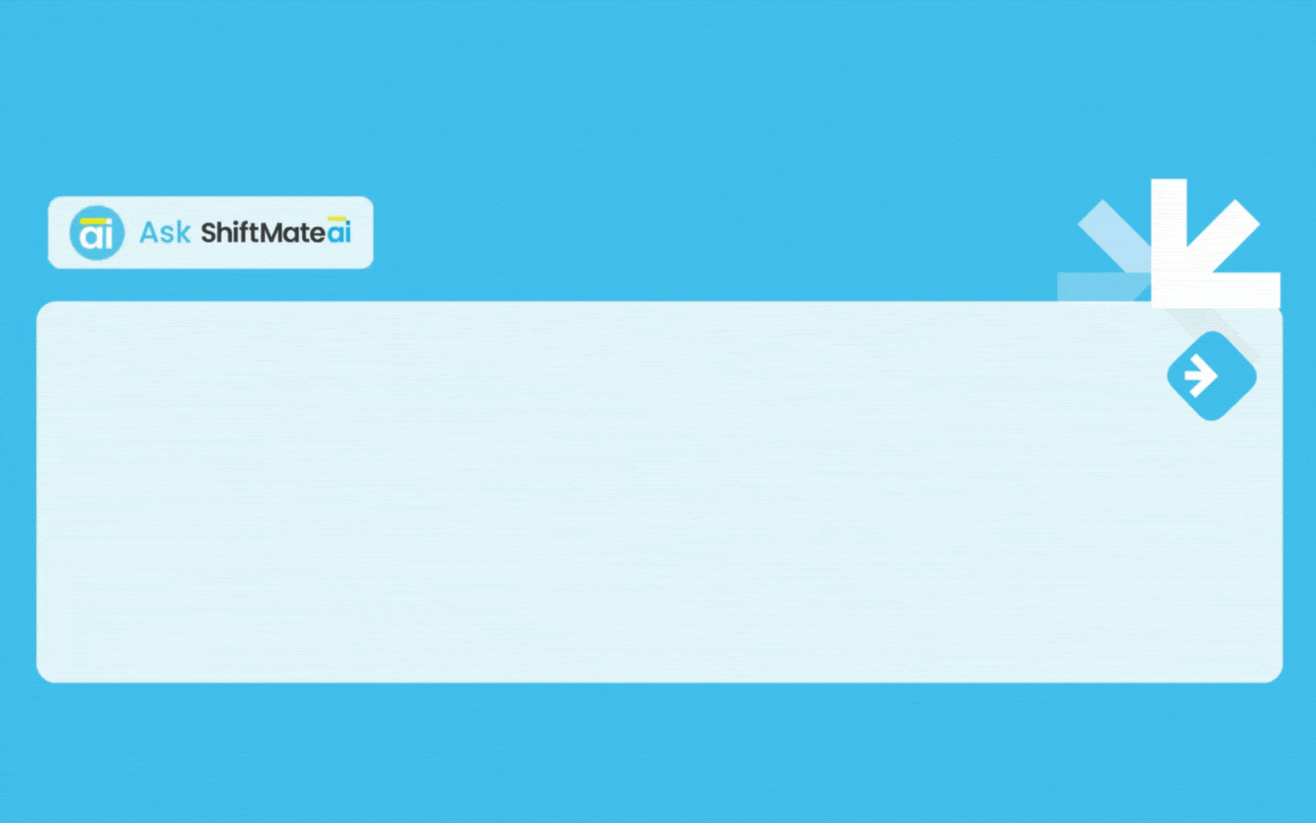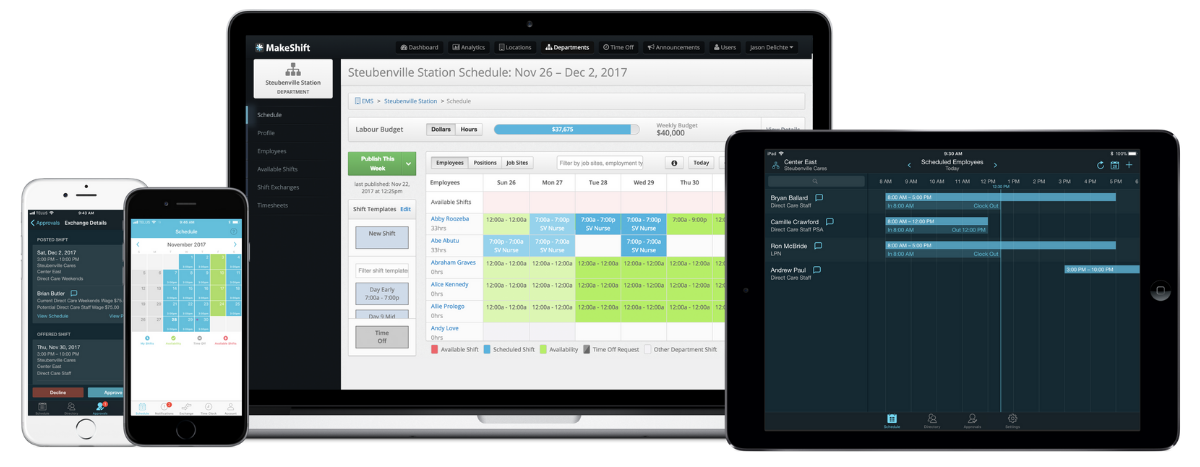In today’s labor market, HR leaders, operations directors, and business owners like you are feeling the heat — especially in industries like retail, hospitality, and healthcare, where schedules are constantly in flux.
Traditional scheduling methods can create headaches like absenteeism, overstaffing, and even burnout among your team.
Thankfully, there’s a solution that can help you respond quickly to changing demands while keeping everything running smoothly. Enter… demand-based scheduling.
This approach streamlines your operations, boosts employee satisfaction, and ensures compliance with labor laws. Imagine a scheduling system that aligns with your business needs and makes life a little easier for everyone involved.
Let’s explore how you can make this happen in your team.
- Why Demand-Based Scheduling is the Future of Workforce Optimization
- Step #1: Uncover Inefficiencies and Analyze Your Scheduling Plan
- Step #2: Gather Insights for Data-Driven Decisions
- Step #3: Consider Employee Availability & Skills
- Step #4: Empower and Engage Your Team
- Step #5: Monitor and Adjust Your Scheduling Strategy
- Step #6: Consider Compliance and Accountability
- Step #7: Choose the Right Scheduling Software for You
- Ready to Increase Employee Satisfaction and Operations Success with Demand-Based Scheduling?
Why Demand-Based Scheduling is the Future of Workforce Optimization

95% of HR leaders say burnout is sabotaging employee retention efforts. Turnover is a fixable problem that costs U.S. businesses $1 trillion yearly (remember… the cost to replace an employee is 150-200% more costly than that employee’s salary).
Demand-based scheduling is one of the easiest ways to prevent employee burnout while increasing employee engagement and retention.
This method uses data and demand forecasting to create dynamic staff schedules.
That means that, unlike traditional methods with fixed shifts assigned regardless of demand fluctuations, some employees work overtime hours, and others barely get any scraps… you can schedule your staff whenever they’re needed most.

Here’s a quick example:
Say you’re in the restaurant industry. When you schedule based on demand, you staff your best people during peak dining hours based on historical data (customer footfall, sales, previous schedules, etc.)
By matching staffing levels to demand, you can avoid the expense of overstaffing during slow periods (reducing labor costs).
Your employees experience less burnout as they are scheduled more effectively, leading to better work-life balance (and higher retention).
Plus, productivity naturally increases when you place the right people in the right place at the right time.
Step #1: Uncover Inefficiencies and Analyze Your Scheduling Plan
Before implementing demand-based scheduling in your team, consider your current system. Ideally, you want to identify your inefficiencies.
Many organizations struggle with pain points like overstaffing, absenteeism, and last-minute schedule changes that are hard to manage because of manual scheduling. What do you, your team, and your companies struggle with?
To figure that out, it helps to ask yourself these questions:
- Are we frequently paying for overtime?
- Are we consistently seeing high employee turnover?
- Are shifts filling quickly, or are common gaps disrupting workflow?
- Is employee morale suffering due to inconsistent schedules?
Don’t glaze over these questions. Dig in to determine the source of your inefficiencies, which will allow you to address them directly and experience improvement.
Once you identify your main paint points, consider what success looks like for your team. Clarify your goals, and then you’re ready to move forward.
Step #2: Gather Insights for Data-Driven Decisions
Demand-based scheduling thrives on data. Understanding your customer footfall and seasonality puts you in the driver’s seat of your scheduling and, therefore, your business.
To create a smarter schedule, gather insights on peak customer demand, historical staffing patterns, and workload trends.
The more accurate your data, the better your scheduling will be.
Here’s what you’ll want to consider:
- Review your peak hours – Gather data on when your business is busiest. This may be daily, weekly, monthly, annually, or even seasonally.
- Labor budget – Scheduling software allows you to generate schedules based on your labor budget and gives you insights into how your schedule affects labor costs.
- Take advantage of forecasting tools – Forecasting software can help you predict the future based on historical trends automatically. Forecasting allows you to anticipate busier periods and schedule accordingly so you’re not overspending on overtime or overwhelmed due to overstaffing issues.
- Be willing to adjust – As you implement your new scheduling systems, allow your managers to quickly modify schedules based on any sudden changes. This will help prevent both understaffing and overstaffing.
Step #3: Consider Employee Availability & Skills
If you’re hoping to improve employee retention, you must consider your employees first. Your employees are 68% less likely to consider leaving when you provide them with a good working experience.

Your demand-based scheduling needs to consider staff availability and skills before scheduling… especially considering that 40% of retail workers stay at their jobs longer due to scheduling flexibility alone.
Scheduling should be based on roles, skills, and availability. This helps your company run smoothly and improves employee satisfaction.
Demand-based scheduling tools like MakeShift help automatically match the right employees with the right shifts, especially during peak hours.
For example, consider a retail store. Scheduling the best salespeople during high-traffic hours ensures that all these customers receive top-notch service while optimizing for sales. It’s a win for everyone involved.
But this goes beyond operational efficiency. When you consider your employees’ availability and skills and match them accordingly, you increase their satisfaction.
You schedule them at a time that works for them on a task they feel confident in. This reduces burnout and promotes a better work-life balance.
Step #4: Empower and Engage Your Team
70% of new programs fail to achieve their goals largely because of employee resistance and lack of support from management.

The takeaway here? If you want demand-based scheduling to improve your operations' success and employee morale, don’t force it on your team and expect them to love it.
Scheduling software adoption must be handled with care.
When introducing your new scheduling system, show your team all the ways it benefits them: more flexibility, more control, greater autonomy, and less burnout. It’s not just some big change being made. It’s a way to improve their work-life balance.
Consider hosting a training to cover your new scheduling software. Empower your employees and give them all the support and information they need to set their availability, trade shifts, understand their schedules, and more.
This flexibility and autonomy increase employee morale and ensure that shifts are filled more efficiently.
Step #5: Monitor and Adjust Your Scheduling Strategy
While it’s much more efficient than traditional scheduling methods, demand-based scheduling isn’t a one-and-done process.
Regular monitoring helps keep your scheduling strategy effective, makes sure it supports your goals, and ensures schedules are fair for all employees.
Here are a few key metrics you want to keep checking as you implement demand-based scheduling in your team:
- Labor costs – Are you seeing a reduction in overtime and unnecessary staffing expenses?
- Absenteeism – Has employee attendance improved with more predictable yet flexible and balanced scheduling?
- Employee turnover – Have your turnover rates reduced with increased communication and employee autonomy?
- Employee satisfaction – Gather feedback from your team on the new scheduling strategy to see how they like it and what can be done to improve it.
Continuously review your data so you can make adjustments along the way.
Step #6: Consider Compliance and Accountability
While not the most interesting aspect of scheduling, this is one of the most important to consider. Compliance with labor laws is critical in any scheduling process, and demand-based scheduling is no different.
Always ensure your scheduling strategy meets legal requirements. You’ll want to consider overtime, rest periods, union agreements, and maximum working hours.
Scheduling software like MakeShift helps managers monitor, manage, and enforce fatigue and other union rules to maintain compliance with labor laws and minimize the risk of legal consequences or workplace safety issues.

It also improves accountability thanks to time tracking that integrates with HR and payroll systems to ensure that every hour worked is accounted for.
Step #7: Choose the Right Scheduling Software for You
Automation and AI-powered scheduling tools are the backbone of demand-based scheduling. A robust system like MakeShift will simplify demand-based scheduling for you and your team with features like:
ShiftMate AI Suite — Optimizes operations and employee wellness through generative AI-powered modules. Utilizes large language and graphical data models with machine learning tech for features like real-time assistance, automated scheduling, and predictive forecasting.

- SmartSupport — Provides 24/7 AI-powered assistance, offering real-time responses, step-by-step instructions, and scheduling tips.
- ShiftPredict powered by Ikigai Labs — Uses AI to analyze historical data and other datasets, accurately predicting future scheduling needs while considering factors like employee wellness.
Team communication — Predictive scheduling is based on better communication and advance notice. Easily communicate with your team through our messaging app.

Stay compliant automatically — Easily monitor, manage, and enforce fatigue and other union rules to maintain compliance with labor laws, promote employee well-being, and minimize the risk of legal consequences or workplace safety issues.

Adjust on the go — Our mobile app and responsive web interface allow managers and employees to conveniently access schedules, submit availability, and make or approve time-off requests on their smartphones or tablets.

Manage labor budgets — Set daily, weekly, or custom labor budgets to align with your financial targets. Adjust your budget in hours or dollars to manage employee workload and control costs effectively.

Built-In Labor Laws and Union Agreements — MakeShift’s ShiftMate AI considers labor laws and union agreements when generating schedules. This takes the guesswork out of it for you and helps you consistently create compliant schedules.
Ready to Increase Employee Satisfaction and Operations Success with Demand-Based Scheduling?
Demand-based scheduling is the future of workforce management, offering a dynamic approach that adapts to real-time needs.
Ready to elevate your scheduling process? Schedule a FREE MakeShift demo today.








